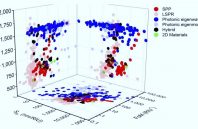Plasmonics and photonics have been drawing attention in both academia and industry due to their use in an extensive range of applications, one of which includes optical sensing. The development of optical sensing technology not only contributes to the scientific research community as a versatile tool but also offers substantial commercial value for smart city and Internet of Things (IoT) applications due to its energy efficiency, lightweight, small size and suitability for remote sensing. Reinforcing its significance, Scientific American identified plasmonic sensing as one of the top 10 emerging technologies of 2018.
Various optical sensing mechanisms and sensor structures have been proposed and demonstrated in the past few decades. Almost every new sensing mechanism or sensor configuration would be explored regularly to test its sensing ability. However, information on the gap between the experimental realization and theoretical limits, the difference between metal-based plasmonic sensors and dielectric-based photonic sensors, and discrimination between propagating eigenwave and localized eigenmode structures were not readily available.

 (585) 768-2513
(585) 768-2513

